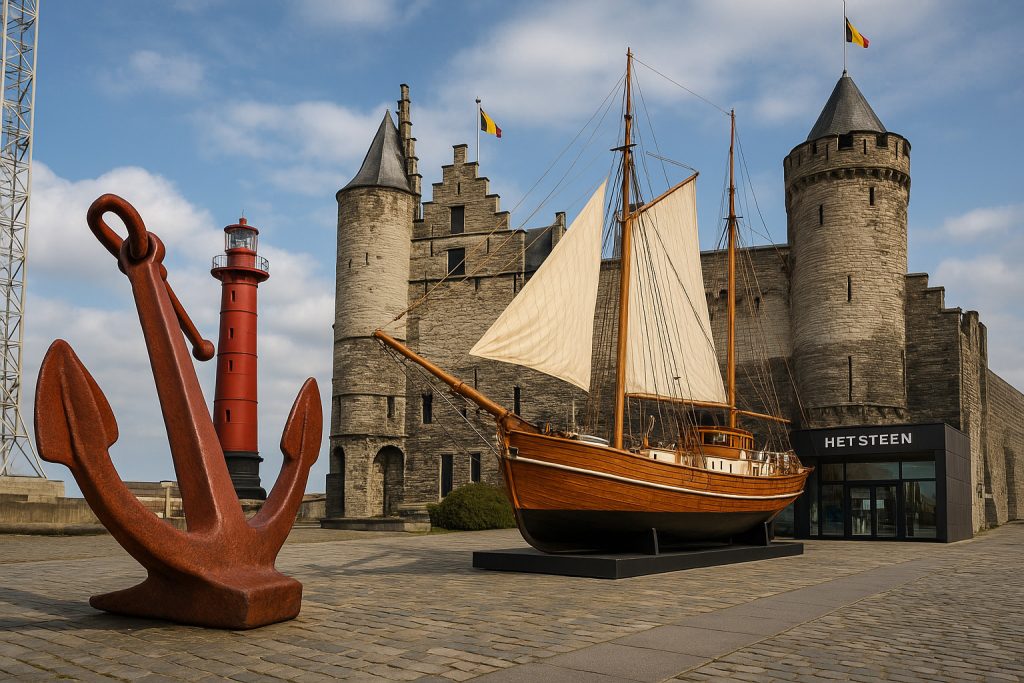Why does a city like Antwerp need a maritime museum? Because its identity has always been inseparable from its port. The Port of Antwerp is not just infrastructure—it’s the city’s backbone, past and present. The Maritime Museum doesn’t simply house exhibits; it charts centuries of trade, migration, industry, and naval evolution.
The Red Star Line Connection
The museum pays particular attention to the Red Star Line, a passenger shipping company that operated from Antwerp between 1873 and 1934. Millions of Europeans boarded these vessels in search of new beginnings in North America. The museum preserves their stories with original artifacts, photographs, and personal diaries, offering an emotional anchor to the exhibits.
- Original ship tickets
- Passenger suitcases
- Cabin reconstructions
- Personal letters from emigrants
Visitors don’t just learn facts; they walk the path of those who left everything behind.
Historic Vessels and Ship Models
Inside the museum and its surrounding pavilions, maritime technology takes form through precise craftsmanship. A large collection of scale models details the evolution of shipbuilding through the ages. From 17th-century merchant vessels to modern cargo ships, the museum shows how design has adapted to purpose.
Highlights include:
- A meticulously scaled model of a Belgian lightship
- Tools used in traditional shipbuilding
- Cross-sections of steamships and oil tankers
- Navigational instruments and their mechanical complexity
Each piece reflects Antwerp’s response to growing trade routes and changing economic needs.
Port of Antwerp: Lifeblood of a City
The museum doesn’t shy away from the port’s role in shaping social and urban dynamics. Antwerp grew because of the Scheldt River, and this is reflected in a dedicated section that chronicles port expansion from the 12th century to today. Through maps, multimedia presentations, and expert commentary, visitors can follow the rise of Antwerp as a global shipping hub.
Key displays include:
- Timeline of port development
- Trade routes from Antwerp to Asia, Africa, and the Americas
- Aerial photography of port zones through the decades
- Interviews with former dockworkers and port engineers
Interactive Learning Spaces
Children and adults alike can step inside simulators, play with virtual crane operations, and learn how shipping containers are routed globally. One room simulates a ship’s bridge, allowing guests to ‘sail’ into the port using real navigation techniques.
Noteworthy installations:
- Container loading challenge game
- Interactive trade map with real-time data
- Virtual tour of a cargo vessel
- Navigation and radio communication setup
These features engage without compromising historical accuracy.
Architectural Contrast: Past Meets Present
The museum’s current home inside Het Steen adds another layer of meaning. This fortress, once a medieval defensive structure, now houses digital exhibits, a welcome center, and access to rooftop views of the river and port. The contrast between stone walls and modern technology reflects Antwerp’s evolution.
Het Steen Highlights:
- Panoramic rooftop viewing deck
- Access to the city’s oldest surviving building
- Glass elevators revealing the building’s medieval layers
- Light projections telling maritime stories on the walls
Why Visit?
This museum doesn’t aim to impress through size—it does it through depth. Each object and room speaks to Antwerp’s identity. The port isn’t just water and cranes—it’s people, risk, resilience, and progress. Whether you’re tracing the history of a shipping empire or watching kids navigate a container ship, the museum offers context you won’t find in guidebooks.
Visiting Tips:
- Start early to catch the guided tour and live demonstrations
- Visit the rooftop around sunset for the best view of the Scheldt
- Combine your visit with a walk along the river promenade
Antwerp’s Maritime Museum gives weight to what the port has meant across centuries. It turns infrastructure into legacy and cargo into culture.


